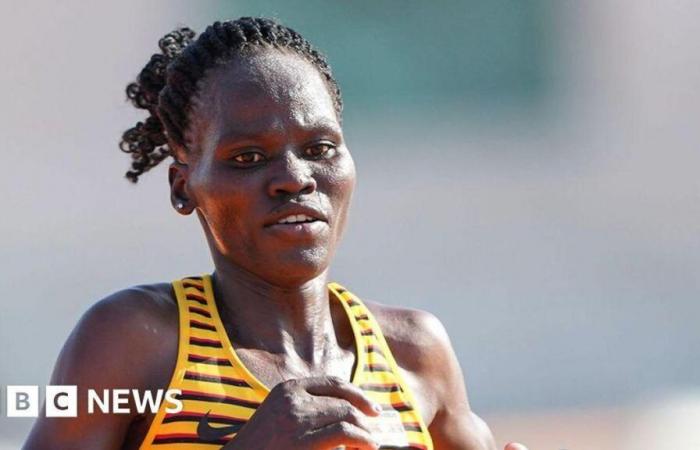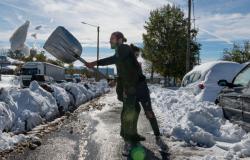Four women’s lives taken too soon have ignited alarm bells across the running world, particularly among female athletes in Kenya, as the brutal murders of Rebecca Cheptegei, Edith Muthoni, Agnes Tirop, and Damaris Muthee Mutua have underscored the constant dangers they face not only from health-related issues but also from violent relationships.
Rebecca Cheptegei, who had reared chickens and savored the simple joys of life, was celebrated as one of her community’s champions. The Ugandan-born runner, who had triumphs like winning the World Mountain Running Championships, had recently built her dream home in the village of Kinyoro, assisted by her athletic achievements. But on September 1, her life would end violently at the hands of her estranged partner, Dickson Ndiema Marangach.
While Cheptegei was as filled with laughter as she was with determination, Marangach’s horrific actions plunged her family, including her 12-year-old and 9-year-old daughters, Joy and Charity, deeply and irrevocably down the rabbit hole of trauma. After attempting to help their mother as she was set ablaze, the two girls watched helplessly, alongside her siblings and the community, as Cheptegei fought for her life. Despite her efforts to skate past death, she succumbed to her injuries days later.
The tragic nature of Cheptegei’s death isn’t merely the outcome of personal violence; it reflects broader issues of gender-related violence, financial abuse, and societal pressures. On November 3, as Kenyan athletes dominated the New York City Marathon, sentiments of victory mingled uneasily with memories of the slain athletes. On social media, tributes flowed freely for the inspirational figures they had lost.
Iten, near Eldoret, is known for mounting Olympic winners, favoring its thin air and extensive trail networks. But recently, it has transformed from merely the “home of champions” to something darker, a compound for fear, as women athletes report incessant violence directed against them. Cheptegei was just one of many cases—Damaris Muthee Mutua was found strangled, with her boyfriend becoming the prime suspect before fleeing across the Ethiopian border.
Edith Muthoni, another promising athlete, was murdered under mysterious circumstances with her husband facing scrutiny, and Agnes Tirop, who had broken records, was killed shortly thereafter. Each of these cases highlights how financial disputes often amplify the risks faced by female athletes, emotions spiraling as power dynamics shift within their relationships.
Janeth Jepkosgei, former 800-meter world champion, has taken on the mantle of advocacy, calling attention to the dangerous exploitation female athletes endure. “We feel scared as women,” she expresses poignantly, and stresses the predatory behavior of some male partners who prey on aspiring athletes, often using their vulnerabilities against them.
Many learn the art of deception early. Jepkosgei explains how men can effectively manipulate young female athletes whose financial situations leave them desperate. “They pretend to be coaches, come to train us. We can’t take those opportunities lightly,” explains Violah Lagat, another prominent runner and advocate, underscoring the normalized environment of gender-based violence. They describe these men, familiar yet menacing, as “vultures.”
Wesley Korir, the 2012 Boston Marathon winner, reflected on this alarming trend: “These men see women as investments,” he said, articulately depicting the grim reality many athletes confront. Men take advantage of their financial aspirations, controlling their lives and meddling with their relationships under what they often describe as ‘survival mode’.
The threat isn’t just from within but extends to the lack of adequate responses from local authorities. Reports of gender-based violence, domestic abuse, and sexual harassment often go ignored, leaving victims isolated. Lagat established Tirop’s Angels, partnered with fellow athlete Joan Chelimo, as part of her crusade to combat these issues. It offers counseling and safe spaces for at-risk athletes.
Even the charity’s efforts face peril, as incidents of outside threats and attempts to harm the women they protect have emerged. “It’s very concerning,” Lagat mentioned as she rushed off to attend to another emergency case at the center; the demand for safety and security is overwhelming.
The tragic deaths have forced many to grapple with feelings of vulnerability. Cheptegei’s family exemplifies the fallout, displaying banners demanding justice for those lost to femicide, but they remain conscious of the greater battle. “It’s so heartbreaking,” reflects Cheptegei’s sister Dorcas, whose memories of her lost sister linger painfully. Whenever she recalls the incident, the image of her mother’s screams and her sister’s imploring eyes haunt her deeply.
The national and international sporting communities and governments must mobilize against these threats to athletes. Change must flow down from houses of power, opening dialogues, holding public forums, and pushing for a stronger societal commitment to protecting those who run not just for medals, but for their lives. Today, as they strive for medals and accolades, they still must wrestle with fears of personal and gender-based violence.
The daily routines of survival clash with the competitive spirit they embody. Women runners, marked by their talents and potentials, deserve not just to excel but to live fearlessly without being hunted down by despair and trauma. The narrative of these athletes is not solely about athleticism but intertwines with their realities, with hope intertwined with heartache as they forge forward.
”We need good mentorship for young girls coming up. The message is clear: We have to protect each other and create spaces where women feel empowered to seek help,” explains Lagat. Advocates, backed by the painful legacies of those lost, aim for progress, desperately hoping the next generation will thrive without embedded fears of femicide and violence.






